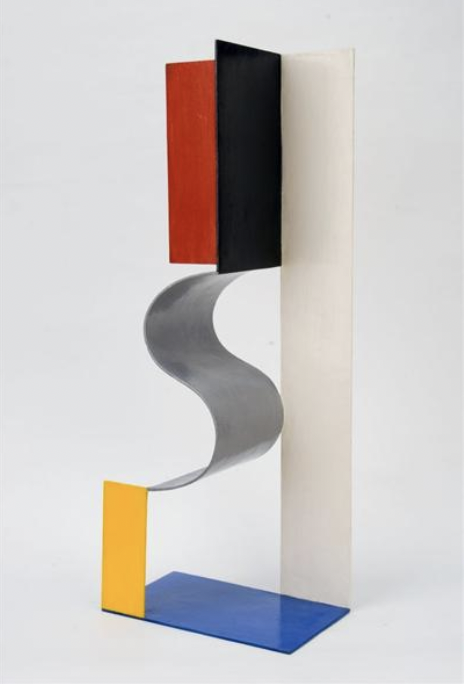Five Interesting Facts About Katarzyna Kobro
Katarzyna Kobro was a prominent female sculptor during the interwar period, and while just a handful of her pieces have survived, they have all had significant artistic value. Her works became even more popular after her death, and she is a source of inspiration to many artists today.
Katarzyna was born in January 1898; she was born in Russia but moved to Poland. Ultimately she identified as Katarzyna Kobro polish sculptor Polish. She was a notable exponent of the Constructivist movement in Poland and a Polish avant-garde sculptor. She opposed Aestheticism and pushed for the incorporation of spatial rhythm along with scientific developments into visual art. She was a pioneer of revolutionary multi-dimensional abstract sculpture.
Kobro was born in Moscow, Russia, to a mixed German and Russian family and moved to Poland during the 1920s, where she produced the majority of her work. She developed the notion of Spatiality with her husband, Władysław Strzemiński, by merging spatial composition, prefabricated materials, and commercial or artificial objects into sculpture. This article will explore some facts about Katarzyna Kobro and Katarzyna Kobro’s art. Read on to learn about Katarzyna Kobro.
The Only Woman To Exhibit With the Polish Group, Blok
You may not know this, but Katarzyna Kobro was the only woman to exhibit with the Polish avant-garde group Blok.
Blok was an avant-garde group of Polish artists who were active from 1918 to 1926. These poets, painters, and sculptors believed in breaking down traditional barriers between art forms and experimenting with new styles and materials. They also wanted to explore how their work could influence social change by bringing about greater understanding among people.
She worked as part of the group alongside her husband from 1924. Their work was based in Warsaw, and they did exhibitions together. However, at the end of 1924, her husband left the group, and it is most probable that she left with him.
She Didn’t Attach Much Importance To The Medium For Her Sculpture.
Katarzyna Kobro art was primarily sculpture, but she was never particular about the medium she used to create her sculpture. Instead, she happened to be more interested in the concept of the work rather than the material used.
While many of her sculptures are made with metal and stone, she also liked to work with wood. Many of her sculptures were made using different types of wood. She enjoyed the way that wood-aged over time.
She felt that it gave each piece a sense of history and allowed them to reflect on their environment organically. She also enjoyed working with wood because it was easy to shape and mold into different forms.
She Ventured Into Constructivism and Dadaism
In the early 1920s, Katarzyna Kobro began using cubism, surrealism, and Constructivism to create her style. Such artists influenced her as Pablo Picasso, Joan Miró, and Amadeo Modigliani. Her first exhibition at the Galerie Der Sturm in Berlin featured a series of highly abstract and geometric paintings in nature.
In 1921 she married sculptor Wladyslaw Strzeminski who introduced her to Dadaism, which greatly impacted their relationship. This was also the beginning of their interest in Constructivism, an art movement that began in Russia under Vladimir Tatlin around 1913-14 but didn’t become popular until after World War I ended (1918).
Kobro’s work took on more abstract forms because she became fascinated with how shapes interact over space – what happens when they meet? How do they react when they touch or overlap? What happens if you rotate one shape while leaving another still?
These are questions that many artists have explored throughout history, but Kobro seems particularly interested in them; this is perhaps why she often used collage methods such as cutouts from magazines or newspaper clippings along with other materials like wood frames or glass panels for her decorative pieces underlining this idea about interacting shapes.
She Did A Joint Exhibition With Henryk Berlewi And Henryk Stażewski
In 1923 she became part of a joint exhibition with two artists named Henryk Berlewi and Henryk Stażewski. The three artists were the only women who joined Blok, an avant-garde group formed by Kazimierz Podsadecki and Tadeusz Peiper.
Kobro’s career as a sculptor began in 1907 when she had her first exhibition at the Salon de la Société des Artistes Indépendants in Paris. She exhibited her work there again in 1908, 1909, and 1910. In 1914 she founded her studio, where she created sculptures using different types of wood, including oak, mahogany, maple, ebony, and beechwood from Poland.
She did not attach importance to the medium used for creating sculptures but instead focused on expressing emotions through movement or action within each piece, such as “Dancer” (1910).
She Died At 28 From A Heart Attack
Katarzyna Kobro died at the young age of 28 from an unfortunate heart attack. She was one of the members of the Polish avant-garde group Blok and was known for her figurative sculptures, made from wood and plaster.
Many people are not aware that she was also an artist, but this fact is revealed by her daughter, who spoke with Time Magazine in 2003 about her mother’s work: “She always had a studio in our apartment where she worked on paintings…I remember one painting that had two naked women on it.”
Conclusion
As we draw the curtain, despite her early death, it is evident that Katarzyna Kobro’s art inspires many today and gives hope to those who might be struggling due to adversity, seeing that she achieved so much despite much adversity. Furthermore, many contemporary artists have been inspired by Kobro’s use of color and form and her ability to massively transform ordinary materials into extraordinary through her creative vision.
